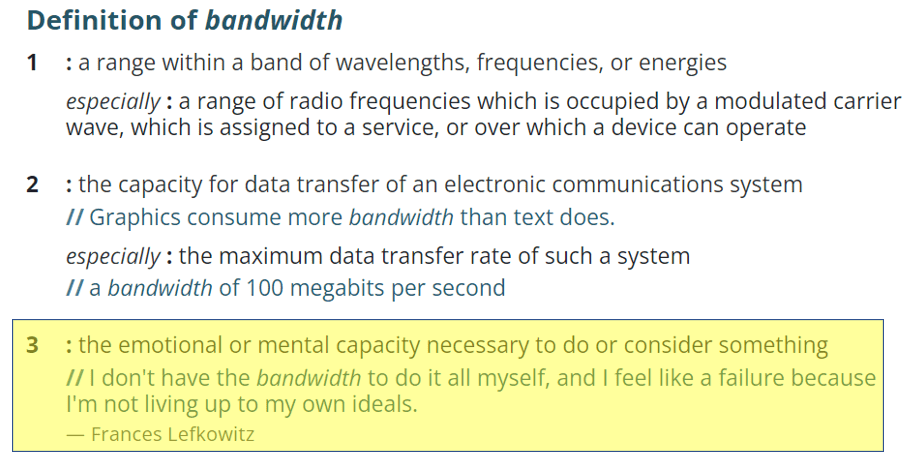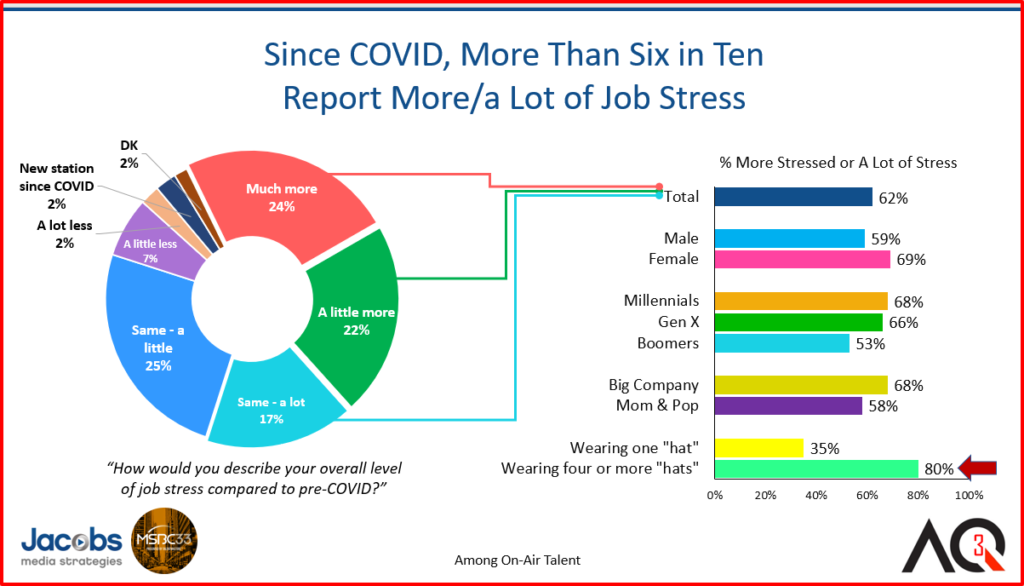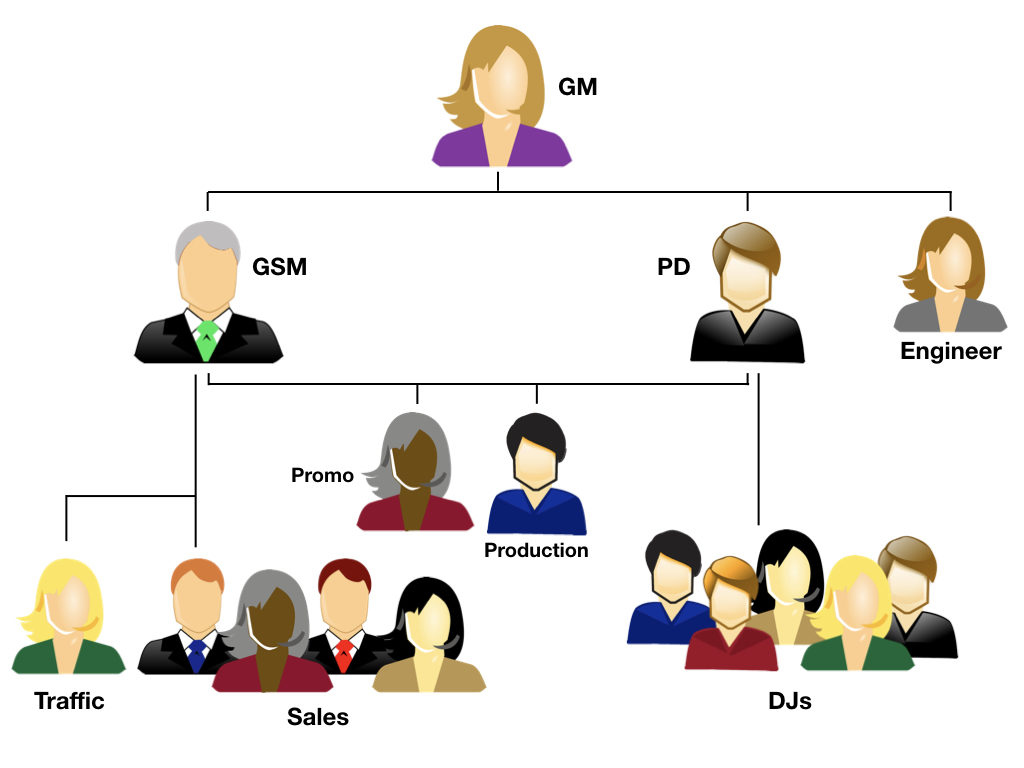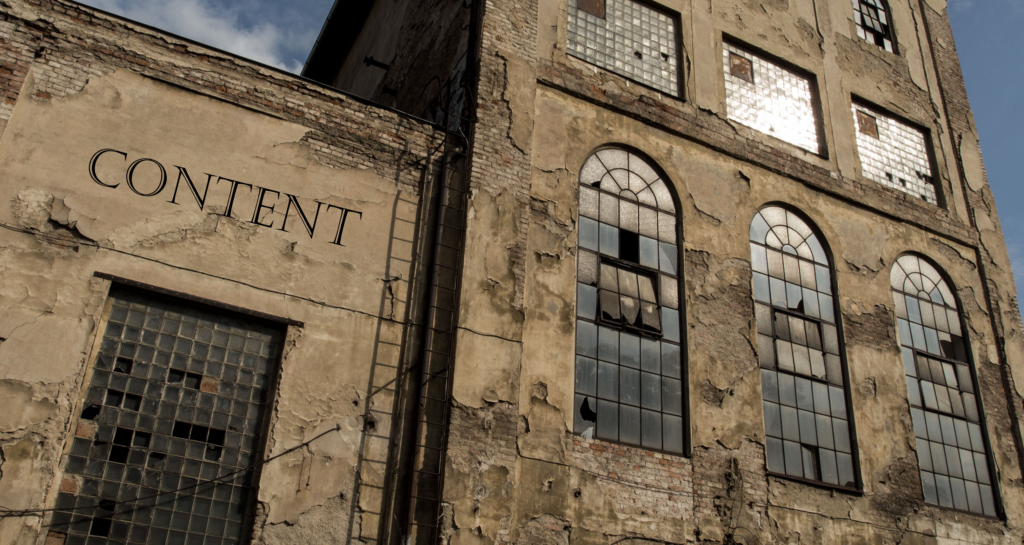
It’s always interesting when a technical term becomes part of our vernacular. The trajectory of “hacking” has been an interesting one, starting out as someone trying to get into a space they don’t have authority to access, but also meaning a way to trial-and-error a project to success.
Then there’s bandwidth, a term that started out as a gauge of technical capacity. But these days, it is more of a statement about personal, work, or mental capacity to get a job done. Even the Merriam-Jackson folks have listed this more modern-day meaning to their traditional dictionary definitions:

It’s that one on the bottom that we’re hearing more and more these days, in U.S. radio stations that run the gamut from commercial to public to Christian. Paul Jacobs (who co-wrote today’s blog post with me) and I have spent a great deal of time during the past few years helping stations, clusters, and companies make the digital transition. If it were easy, every company would have seamlessly pulled it off. But the fact is, this brand-altering experience has an extremely high degree of difficulty.
Yes, there is the digital transformation – knowing the products and services to create and market – and then finding the talent and capacity to handle it. But there’s also the analog transformation, a term I first heard from Nancy Lyons, CEO of Clockwork, a Minneapolis-based agency.
Speaking at a PRPD Conference a few years back, Nancy outlined the delicate staffing maneuvers required for success. Sometimes, this means a reassignment of duties, hiring new people with the desired skill sets, and sadly, letting some people go who cannot or will not make the turn. In all cases, the process can be gut-wrenching and sad.
In our meetings with various teams of employees at the station level, we now regularly heard “the B-word” – bandwidth – in our conversations about the organization. That is, what it will take to accomplish the company’s lofty goals. In so many cases where we’re going through the list of corporate assets and shortages, the lack of bandwidth almost always ends up on top of the “Weaknesses” list.
For everyone who has lost their job in radio over the past decade, those who have survived the purges – OK, reductions in force – will quietly confide that they are well beyond capacity. And the staffing reductions only serve to increase their already formidable workloads. But it goes beyond the number of hours in a day or a week. Many of these new tasks require training and time, neither of which is abundant.
Of course, radio employees are almost never surveyed, so we don’t exactly know what the rank-and-file are thinking. But we do know what’s on the mind of air talent, and many are overwhelmed. Last summer, we surveyed more than 600 commercial radio DJs and hosts, representing both spoken word and music stations. And we learned the average personality is wearing nearly three “hats.” And overall, more than six in ten are feeling the stress and/or the pressure is rising:

Heavy stress is across the board, in big companies and in mom & pop’s. But a look this question of multiple job responsibilities – that is, “hats” – reveals the more on your plate, the more stress you’re feeling. That’s not exactly a profound finding. But it should send a message to corporate and management that making even more demands is likely to send a percentage of employees past the breaking point.
 And of course, that stress is being felt up and down a radio station’s org chart. Between reduced staff and an expansion of services (especially in the digital realm), many feel the internal rubber band is being stretched to a point where the output has declined and workers are calling it quits. We hear from stations that have essentially eliminated their promotional departments and street teams, and yet salespeople are still being tasked with sponsoring events. In some cases, the salespeople double as the promotion team.
And of course, that stress is being felt up and down a radio station’s org chart. Between reduced staff and an expansion of services (especially in the digital realm), many feel the internal rubber band is being stretched to a point where the output has declined and workers are calling it quits. We hear from stations that have essentially eliminated their promotional departments and street teams, and yet salespeople are still being tasked with sponsoring events. In some cases, the salespeople double as the promotion team.
Amidst the pressure for more – more revenue, more profit, more digital products, and more content – something’s gotta give.
The creation of “digital tool boxes” has forced many local broadcasters to launch new and different offerings for the sales reps to market. The end result is often high frustration and low quality. Many sales teams simply don’t know where to start with clients. And advertisers frequently find themselves in the same boat.
But there’s a way forward. We’ve put together a 7-point plan designed to address the bandwidth deficit, and bring a sense of rationality to a station, cluster or company effort:
1. Do your S.W.O.T diligence – This is what you do before you start jumping into the digital fray. Or in the case of so many brands, a great tool for “taking inventory.” By objectively listing out the strengths, weaknesses, opportunities, and threats facing an organization, broadcasters can attack problems before they threaten the overall health of the organization.
the strengths, weaknesses, opportunities, and threats facing an organization, broadcasters can attack problems before they threaten the overall health of the organization.
If you and your people are too close to the situation, bring in an outside moderator to walk you through the process. A half a day spent on building your S.W.O.T. will save you money and heartache down the road.
2. Sometimes, more is less – When your enterprise launches too many digital products, the end result can be that none of them are especially well-executed and the sales staff is swamped with a plethora of digital offerings. Ries & Trout’s “The Law of Sacrifice” comes into play here. Winnow your offerings down to a manageable number of quality products that can be marketed.
a plethora of digital offerings. Ries & Trout’s “The Law of Sacrifice” comes into play here. Winnow your offerings down to a manageable number of quality products that can be marketed.
Back in the early days of podcasting, NPR actually cancelled a number of shows that were preventing some of its truly great productions a chance to develop and grow. If you’re making too many things in the content factory, take a step back and circle the wagons around your best, most marketable products.
3. Talk to your staff – A survey might be a good start. But given burnout levels and lower responses rates from Nielsen ratings to music tests, consider one-on-one interviews with your most important players. Similar to the S.W.O.T., if you can’t be objective or there’s baggage, consider farming this task out to an outside entity who will guarantee confidentiality to team members.
You want to hear their truth, so you have to imbue the process with unconditional trust. How are they holding up? Where do they need help? Where are their fissures in the station fuselage that need to be addressed and repaired before undertaking the next mission?
4. Reanalyze the operation’s org chart – Many were created back in the 70’s and 80’s when running a radio station was a much simpler task.  Today, the needs and responsibilities have changed, forcing a rethink of who does what – and who reports to whom. Do you need a Chief Content Officer to oversee broadcast and digital content? What role might a Chief Revenue Officer play? And what about Biz Dev, as it relates to prospecting, lead generation, deal-making, and partnerships?
Today, the needs and responsibilities have changed, forcing a rethink of who does what – and who reports to whom. Do you need a Chief Content Officer to oversee broadcast and digital content? What role might a Chief Revenue Officer play? And what about Biz Dev, as it relates to prospecting, lead generation, deal-making, and partnerships?
When an operation focuses on its output and its needs, it becomes easier to assess whether you have the number of horses and the right horses in place to accomplish the goals. In other words, bandwidth.
5. Perform a cost/benefit analysis of everything produced – As new initiatives are added, are they having a positive or a negative impact on your core business? What is your core business at this time, and how can you project out 3-5 years to take advantage of where the media marketplace is moving? After product launches have had the opportunity to hit their stride, objectively analyze how they’re working. Are they properly staffed? Are the best tools in place to help team members do the job?
your core business? What is your core business at this time, and how can you project out 3-5 years to take advantage of where the media marketplace is moving? After product launches have had the opportunity to hit their stride, objectively analyze how they’re working. Are they properly staffed? Are the best tools in place to help team members do the job?
6. Coach ’em up – Are managers in a position to…manage? Assuming they are fully qualified, do they have the time and resources to train new hires, especially in a remote environment? If not, what training can be provided in the form of webinars and course work to ensure a better understanding of the material, as well as acceptable results? Even back in the day, training at most radio stations was a shaky proposition. In the current environment, the stress of not mastering the skill set can be alleviated, allowing for better outcomes.
7. Develop a recruitment/retention strategy – That is, where are you going to find that next generation of pros to occupy those boxes on your org chart? Who are you competing against for talent? How are you prospecting and assessing new talent, and does your team have the knowledge to make these judgments? In many cases, this is a lot different than hiring a new account rep or a new afternoon drive personality.
talent? How are you prospecting and assessing new talent, and does your team have the knowledge to make these judgments? In many cases, this is a lot different than hiring a new account rep or a new afternoon drive personality.
And then there’s the task of hanging onto the talent you already have, especially those “linchpins” who are essentially indispensable to the operation. We’re in a fluid environment where many people are rethinking their careers, their family time, their locales, and their lifestyles.
8. Let’s not forget your constituents – Of course, we’re talking about the audience and the advertisers, each of whom deserve input in the process. Are you putting your chips on the wrong spots on the board? Are you providing content, goods, and services they want and need – or they cannot get easier and cheaper elsewhere? For listeners, what is it you provide that is unique in a landscape of infinite offerings? Is it your local coverage, your personalities, your community efforts – what? – that still make a discernable difference?
For advertisers, what reach and results components are of most value to them, and how can you fill these needs. Our research indicates that many clients, especially in the retail world, lack the understanding to make the smartest decisions for their businesses. Our research indicates many are looking for a local media expert they can trust to help guide their marketing efforts. A knowledgeable, honest sales rep may be able to provide information and confidence to clients who need guidance.
understanding to make the smartest decisions for their businesses. Our research indicates many are looking for a local media expert they can trust to help guide their marketing efforts. A knowledgeable, honest sales rep may be able to provide information and confidence to clients who need guidance.
Every operation is different, of course. But the common thread we hear again and again in situations that vary by size, geography, and ownership is “not enough bandwidth.” Determining what this means and how to address it organizationally is why managers get paid.
this means and how to address it organizationally is why managers get paid.
But just as we see the broadcast revenue line going down and the digital trajectory continuing to rise, the same old same old approaches to content, marketing, and sales need to rethinking, and in many cases, a new course of action.
Yes, we do this, as do other companies that have the data, the experience, and the familiarity with these situations to be of value to you. It’s not a weakness to ask for help and guidance.
Add it in as one your “strengths.”
- What To Do If Your Radio Station Goes Through A Midlife Crisis - April 25, 2025
- A 2020 Lesson?It Could All Be Gone In A Flash - April 24, 2025
- How AI Can Give Radio Personalities More…PERSONALITY - April 23, 2025




Leave a Reply